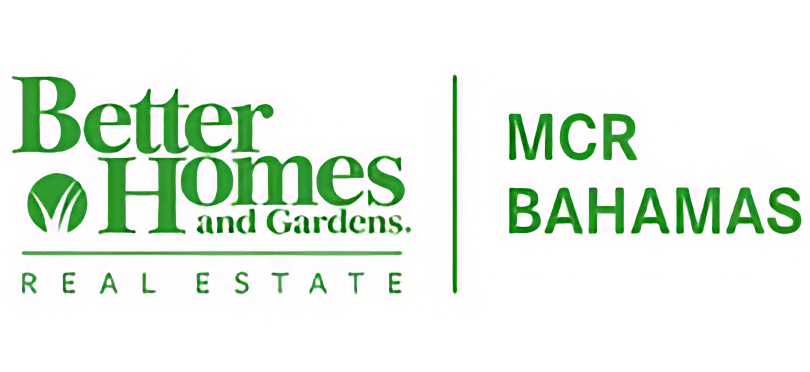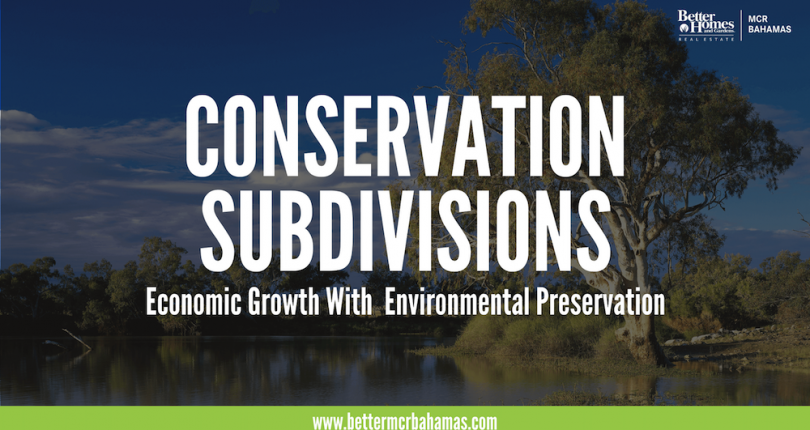- Tips To Buy Your Townhouse | Bahamas Real Estate - October 18, 2021
- Land Investments Are A Huge Opportunity - September 21, 2021
- Blockchain In Bahamian Real Estate | Bahamas Real Estate - September 10, 2021
Our island chain is among the world’s most attractive in part due to its natural beauty and ongoing effort is made to preserve it as the country develops. This effort should be true of residential subdivision developments. Cue the conservation subdivision.
TRADITIONAL SUBDIVISION DESIGN
A “traditional” subdivision design typically takes a large tract of land and uses all developable land within that tract for roads and house lots based on minimum or near minimum lot size requirements according to zoning and density criteria. Open space is often consigned to either the absolute minimum, least desirable or undevelopable portions of the tract. In layman’s terms, most of the land will be surfaced for roads or built upon. In contrast, a conservation subdivision takes a “greener” approach to the overall design by clustering homes in an aim to leave approximately forty to fifty percent of the tract undeveloped. An ideal case leaves undeveloped land protected and mostly or completely undisturbed.
CONSERVATION SUBDIVISION DESIGN
For instance, imagine if a typical zoning and density criteria requires a minimum lot size of 15,000 square feet and a 100-acre tract could yield roughly 200 home sites. Subject to all approvals through the Department of Physical Planning, the developer of a conservation subdivision would be allowed to offer the same 200 home sites on 9,000 square foot lots and the remaining land be undeveloped. Alternatively, most of the community may conform to the zoning and density criteria requirements while a minor but specified section of the tract may have an exceptional approval for a higher density development within the residential community for condominiums, townhomes, developer apartment complexes or even narrow lots. The remaining undeveloped land may be seasonal wetlands, natural caves, forest, other greenery and in some cases may incorporate outdoor trails or recreational green space. The protected green space is then permanently preserved and maintained by means of a homeowner’s association, local government agency or both.
This idea may sound novel but it’s not. A close resemblance can be seen in golf course communities. Many residents appreciate the atmosphere and visuals of park-like surroundings alongside their homes and neighbours even if they never play a single round of golf. And why wouldn’t they? If given the choice, there are many homeowners that would welcome open spaces, scenic and natural vistas, or environmental amenities. Conservation subdivisions are essentially the same but without bunkers and putting greens. Demand in these neighbourhoods and premium home values are proof of the long-term appreciation and marketability of open space designs in residential communities. This brings us to a compelling reason for developers to consider conservation subdivisions.
Related: Why Gated Communities Are For You!
STRATEGIC DESIGNS CAN BE PROFITABLE
Such strategic designs can be profitable. They allow developers to pursue the highest economic value of the overall tract and get a return on their investment. An important consideration for developmental costs is the installation of infrastructure and it can be reduced significantly due to the cluster design and targeted site locations, with less land to clear and grade, fewer roads and less distribution points for power, water, and sewer lines. This should be great news to Bahamian developers and foreign direct investors. Conservation subdivisions also achieve desirability in the market for homes in natural settings and the increasing eco-conscious consumer or developer.
Through another lens, local government can leverage such designs to create more broader encompassing green-space networks that span multiple communities. For example, multiple greenways (protected and maintained green space) spanning miles and meandering from various neighbourhoods while connecting the largest parks in the mid-south city of Memphis, Tennessee have become a jewel and attraction. They combine conservation plans with the community, achieving preservation of natural biodiversity and beautiful scenery while connecting people from various neighbourhoods , promoting fitness, and reducing fossil fuel use. Thoughtful design and planning can create similar opportunities as residential needs grow on the island of New Providence. As new residential developments come to market, if conservation subdivision design is embraced, it could also limit the need and costs associated with the creation and maintenance of new public parkland as well. This is an added benefit since cost savings of any kind would be appealing in any fiscal planning.
Less can be more. Subdivision design and conservation do not have to be at odds. There may just be a win-win-win for local economic growth, preservation of the environment and residents that want a community with great character in scenic surroundings and natural settings. If you’re looking for a home in a greener community or thinking of developing one, contact Better Homes & Gardens Real Estate.

